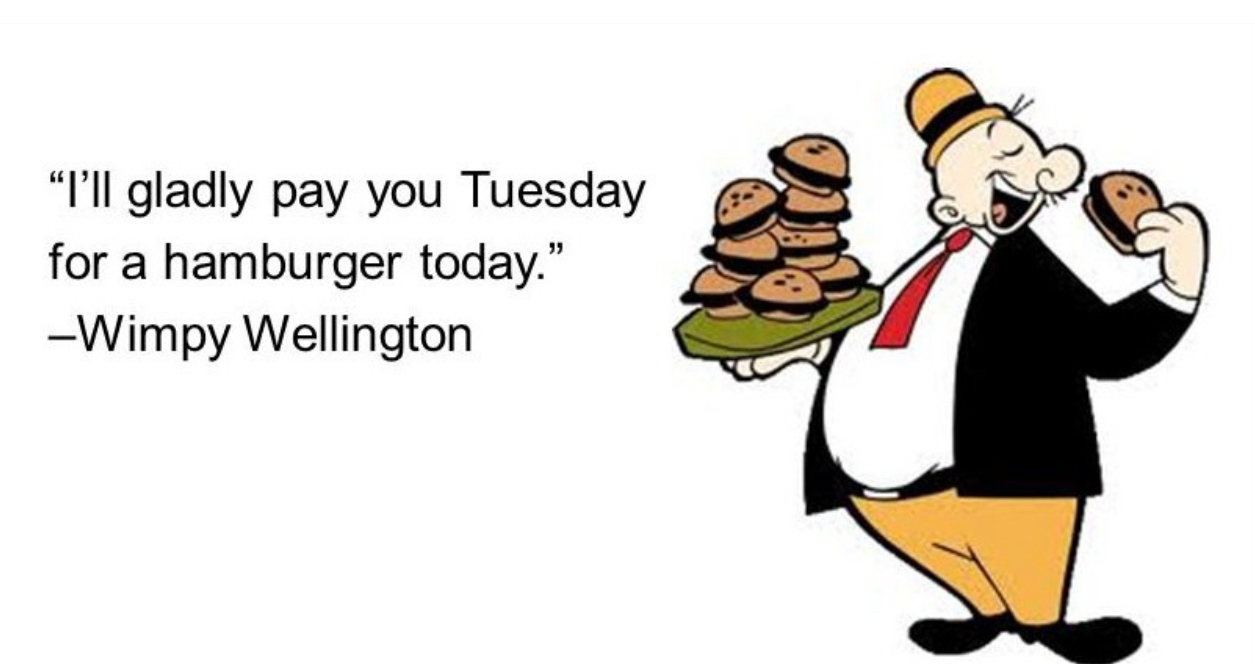In the classic Popeye cartoons, Wellington Wimpy was famous for saying:
“I’ll gladly pay you Tuesday for a hamburger today.”
It was a funny line back then, but today, this mindset has become a real-life financial trap. DoorDash and Klarna have teamed up to allow customers to finance their takeout meals, turning Wimpy’s bad habit into a business model.
But here’s the truth: if you have to finance fast food, you can’t afford it. And Klarna’s “Buy Now, Pay Later” (BNPL) option for DoorDash is one of the worst financial decisions you can make.

The DoorDash & Klarna Partnership: A Recipe for Financial Disaster
DoorDash already charges premium prices for convenience. Between delivery fees, service fees, and driver tips, a $12 meal can easily turn into a $25+ order. Now, with Klarna’s BNPL option, customers can break their payments into smaller installments, delaying the financial hit.
At first, it sounds great—eat now, pay later. But here’s why it’s a terrible financial move:
1. Paying Interest on Fast Food is Financially Insane
BNPL services aren’t free—they often come with late fees and interest rates if payments aren’t made on time. What starts as a $30 DoorDash order could easily turn into $50 or more if payments are missed.
Would you finance a Big Mac if it meant paying double for it later? That’s exactly what happens when people start using Klarna for DoorDash orders.
2. It Trains You to Spend Money You Don’t Have
Klarna makes it easy to overspend because it delays the financial pain. Instead of seeing the full price upfront, you see a much smaller installment—giving you a false sense of affordability.
This leads to a dangerous habit of living beyond your means, spending more than you can afford, and normalizing short-term financial decisions that create long-term debt problems.
3. It Keeps You Stuck in the Paycheck-to-Paycheck Cycle
People who finance food deliveries aren’t doing it because they have plenty of disposable income. They’re doing it because they’re already struggling financially. Instead of helping people budget better, services like Klarna keep them stuck in a cycle of paycheck-to-paycheck living.
Think about it: If you’re financing a cheeseburger today, what happens next week when rent, bills, and other payments are due? The money still has to come from somewhere.
4. DoorDash is Already Overpriced—Now You’re Paying Even More
DoorDash meals already cost way more than picking up food yourself. Now, Klarna adds another layer of financial burden, making the actual cost of your meal even higher over time.
Would you ever walk into a fast-food restaurant and ask for a loan to buy a burger? Of course not. But that’s essentially what Klarna is offering.
A Better Approach: Pay for Food When You Can Actually Afford It
Wimpy’s “I’ll pay you Tuesday” mentality was a joke in Popeye, but in real life, it leads to financial stress, debt, and long-term money problems. If you don’t have the cash for DoorDash today, here’s what you can do instead:
- Cook at home. It’s cheaper, healthier, and helps you develop discipline.
- Plan your meals. Meal prepping can save you hundreds of dollars each month.
- Use cash or debit, not credit. If you can’t afford takeout today, wait until you can.
- Build an emergency fund. Having money set aside prevents you from turning to financing for basic needs.
Don’t Be Like Wimpy—Start Winning With Your Money Today
Klarna and DoorDash want you to believe that you can afford something just because you can finance it. But financial freedom comes from living within your means, planning ahead, and making intentional money choices.
If you’re tired of being stuck in the paycheck-to-paycheck cycle and want to take control of your finances, I can help. As a Ramsey-trained Financial Coach, I help people like you break free from debt, build wealth, and create a future where money isn’t a constant stressor.
📅 Schedule a free consultation today and start your journey toward financial peace!
➡️ Click here to book a session
What Do You Think?
Have you ever used BNPL services for food? Do you think Klarna & DoorDash are helping or hurting consumers? Drop your thoughts in the comments!
